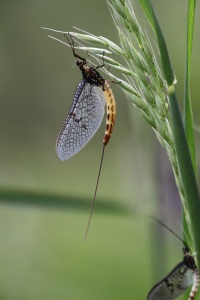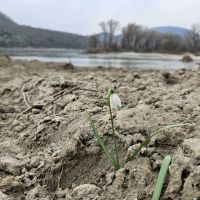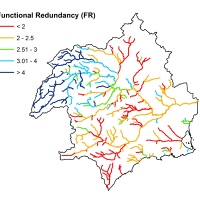The mayfly’s lifecycle: a fascinating, fleeting story
Guest author: Craig Macadam, Riverflies partnership, Buglife and Ephemeroptera Recording Scheme
—
The mayfly’s lifecycle is one of the most fascinating and fleeting stories in the natural world. One of the many characteristics that makes mayflies the unique insects they are is the potential for two different winged adult forms in their life cycle. The nymph emerges from the water as a dull-coloured sub-imago (or dun) that seeks shelter in bankside vegetation and trees. After a period of a couple of hours or more, the sub-imago once again sheds its skin to transform into the brightly coloured imago (or spinner). It is not clear why mayflies have retained this unique step in their lifecycle, however it is thought that they may not be able to achieve the change from nymph to sexually mature adult in one step.
A mayfly’s life cycle starts with the males forming a swarm above the water and the females flying into the swarm to mate. The male grabs a passing female with its elongated front legs and the pair mate in flight. After copulation, the male releases the female, which then descends to the surface of the water where she lays her eggs. Once mated she will fall, spent, onto the water surface to lie motionless, with her wings flat on the surface, where fish pick them off at their leisure. The male fly rarely returns to the water but instead he goes off to die on the nearby land.
The eggs fall to the bottom of the water where they stick to plants and stones. Flies of the Mayfly family Baetidae pull themselves under the water to attach their eggs directly to the bed before being drowned by the current. The nymphs take anything between a few days to a number of weeks to hatch depending on water conditions and the species, and the resultant nymphs will spend various lengths of time, up to two years, foraging on the bottom before emerging as an adult fly.
When it is time to emerge, the nymphs make their way to the surface where they pull themselves free of their nymphal shuck and emerge as a sub-imago. While they rest here to dry their newly exposed wings, they are at their most vulnerable to attack from fish.
Some species exhibit great synchronicity in their hatching. The North American species Hexagenia limbata hatches in huge numbers from the Mississippi every year. The total number of mayflies in this hatch are estimated to be around 18 trillion – more than 3,000 times the number of people on earth. The newly emerged insects are attracted to lights in riverside towns and villages and the local authorities deploy snow clearing vehicle to remove their rotting corpses. Ironically, what is seen as a nuisance in America is seen as a gift in Africa. Locals around Lake Victoria gather adults of the mayfly Povilla adusta together with Chironomid midges to make a type of patty called ‘Kungu’. This protein rich food stuff is an important part of their diet.















